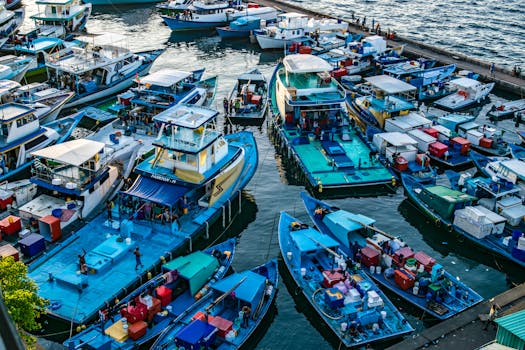
India's Maritime Ambitions: New Strategy to Boost Domestic Shipping and Cargo Share
India is gearing up to significantly increase the share of cargo transported by its own ships. A comprehensive new plan, currently under development, aims to revitalize the domestic shipping sector and challenge the dominance of foreign carriers. This ambitious initiative addresses several key challenges facing the Indian shipping industry, promising a boost to the country's economy and strategic autonomy. The plan focuses on a multifaceted approach encompassing infrastructure development, policy reforms, and technological upgrades. This move signifies India's determination to become a global maritime powerhouse, leveraging its strategic location and burgeoning economy.
Addressing the Current Cargo Imbalance: Why India Needs This Plan
Currently, a significant portion of India's import and export cargo relies on foreign-flagged vessels. This dependence creates vulnerabilities, including higher freight costs, potential delays, and a lack of control over crucial supply chains. The new plan directly addresses these shortcomings, aiming to increase the share of cargo carried by Indian ships, a metric often referred to as the "cargo share." This increased cargo share translates directly into:
- Reduced Freight Costs: By leveraging domestic shipping capacity, India can negotiate better rates and reduce reliance on volatile global freight markets.
- Enhanced Supply Chain Resilience: Greater self-reliance in shipping strengthens the country's resilience against global disruptions and geopolitical uncertainties.
- Economic Growth: The plan is expected to stimulate economic activity, creating jobs in shipbuilding, port operations, and related industries. This contributes to overall GDP growth and employment generation.
- Improved Trade Balance: Increased utilization of Indian ships directly impacts the country's balance of payments, leading to potential savings in foreign exchange.
Key Pillars of the New Plan: A Multi-pronged Approach
The proposed plan is built on several key pillars, each designed to address specific challenges and unlock the full potential of the Indian shipping sector. These pillars include:
1. Infrastructure Development: The plan prioritizes significant investments in port infrastructure, including modernization of existing ports and the development of new ones. This includes:
- Sagarmala Project Expansion: Expanding the scope and efficiency of the existing Sagarmala project, focusing on port connectivity, logistics improvements, and coastal shipping development.
- Modernization of Port Equipment: Upgrading port equipment to handle larger vessels and increase efficiency, reducing turnaround times for ships.
- Development of Inland Waterways: Investing in the development of inland waterways to reduce reliance on road and rail transport for certain cargo types. This is a key element in improving the efficiency of coastal shipping in India.
2. Policy Reforms & Regulatory Framework: Streamlining regulations and creating a more investor-friendly environment will be crucial for attracting both domestic and international investment in the shipping sector. This includes:
- Easing of Shipping Regulations: Simplifying regulatory processes for ship registration, licensing, and operations.
- Incentivizing Domestic Shipping: Offering attractive tax incentives, subsidies, and other financial support to encourage investment in Indian shipping companies and shipbuilding.
- Promoting Public-Private Partnerships: Encouraging collaboration between the government and private sector players to expedite infrastructure development and operational improvements.
3. Technological Advancements: Embracing new technologies is crucial for improving efficiency and competitiveness. This includes:
- Digitalization of Port Operations: Implementing advanced digital technologies to optimize port operations, reduce congestion, and improve efficiency.
- Investment in Modern Vessels: Encouraging investment in energy-efficient and technologically advanced vessels to reduce operating costs and improve environmental performance.
- Adoption of AI and Data Analytics: Leveraging AI and data analytics for better route planning, cargo management, and predictive maintenance.
Challenges and Opportunities: Navigating the Path Ahead
Despite the ambitious goals, the plan faces several challenges. Competition from established global players, securing sufficient funding, and overcoming bureaucratic hurdles are some key concerns. However, the opportunities are equally significant. The growth of India's economy, its strategic geographical location, and the growing demand for global trade offer a strong foundation for success.
Conclusion: India's new plan to boost its domestic shipping industry holds immense promise. By addressing infrastructure gaps, implementing policy reforms, and embracing technological advancements, India can significantly increase its cargo share and reduce its reliance on foreign-flagged vessels. This initiative will not only enhance the country's economic competitiveness but also strengthen its strategic autonomy in global trade. The success of this plan will be pivotal in shaping India's future as a major maritime player on the world stage. The increased focus on coastal shipping, port modernization, and the effective implementation of Sagarmala will be key to unlocking the full potential of this ambitious undertaking. The plan's impact on Indian GDP growth, foreign exchange savings, and job creation will be closely monitored in the coming years.




















